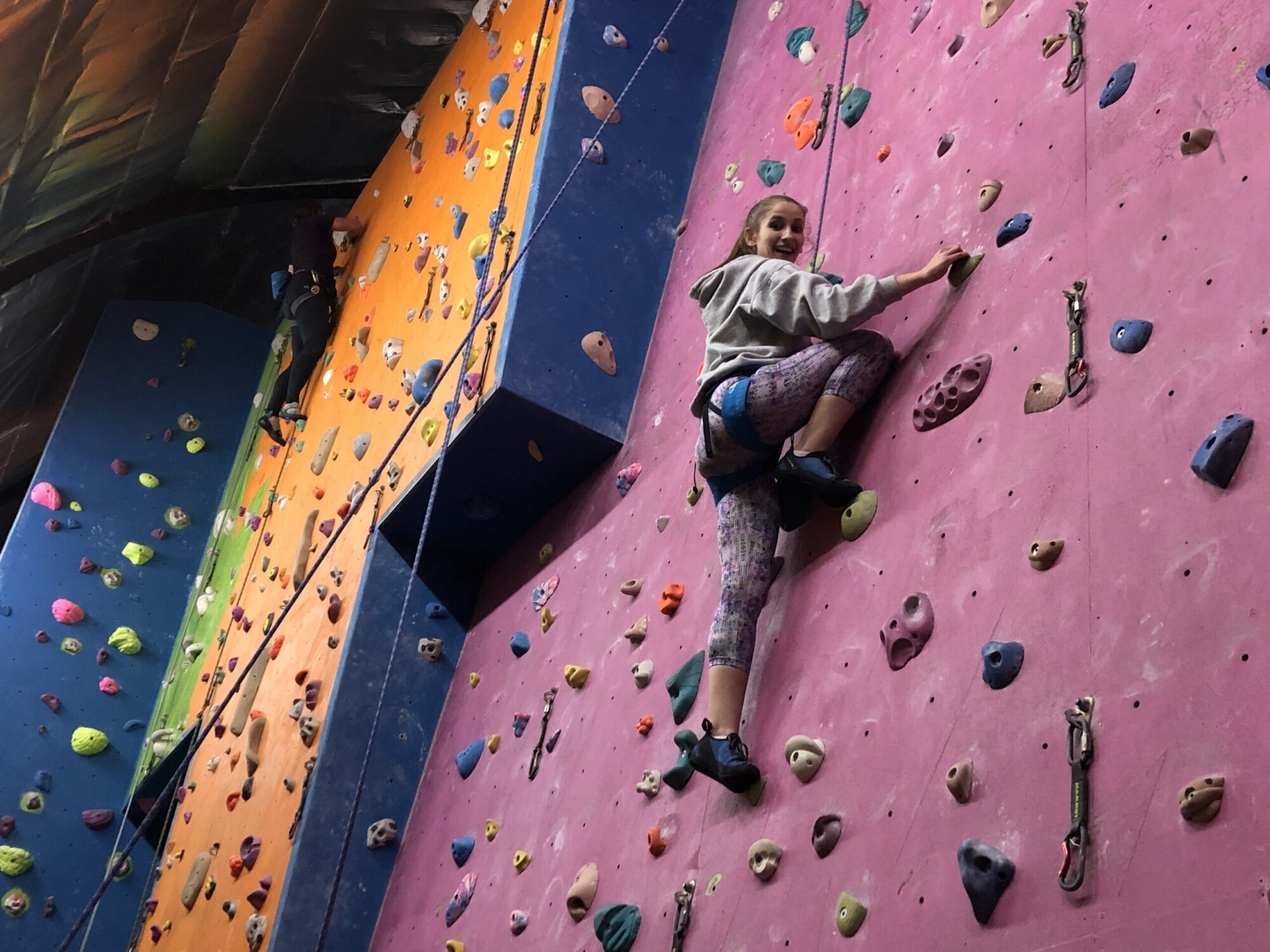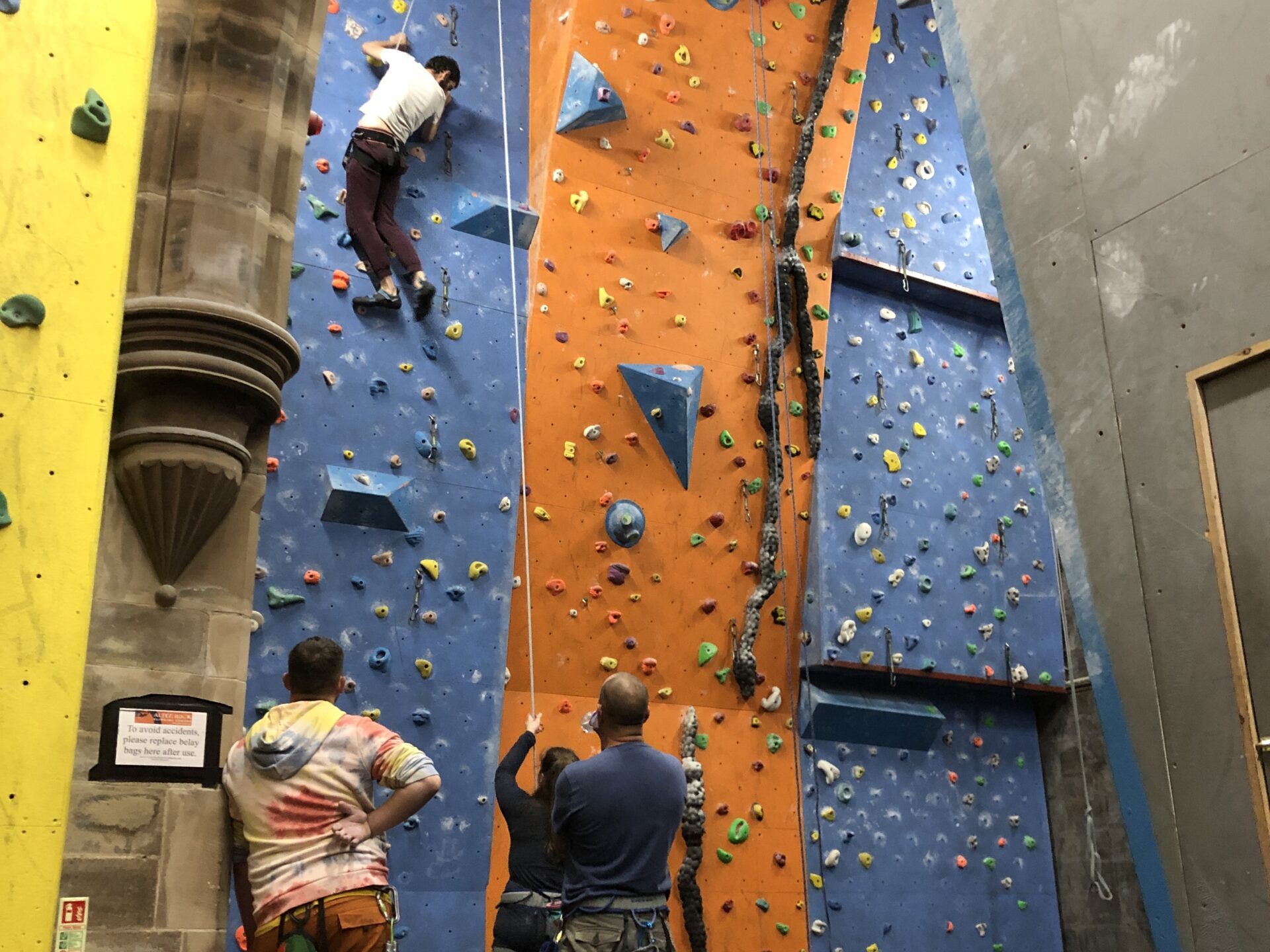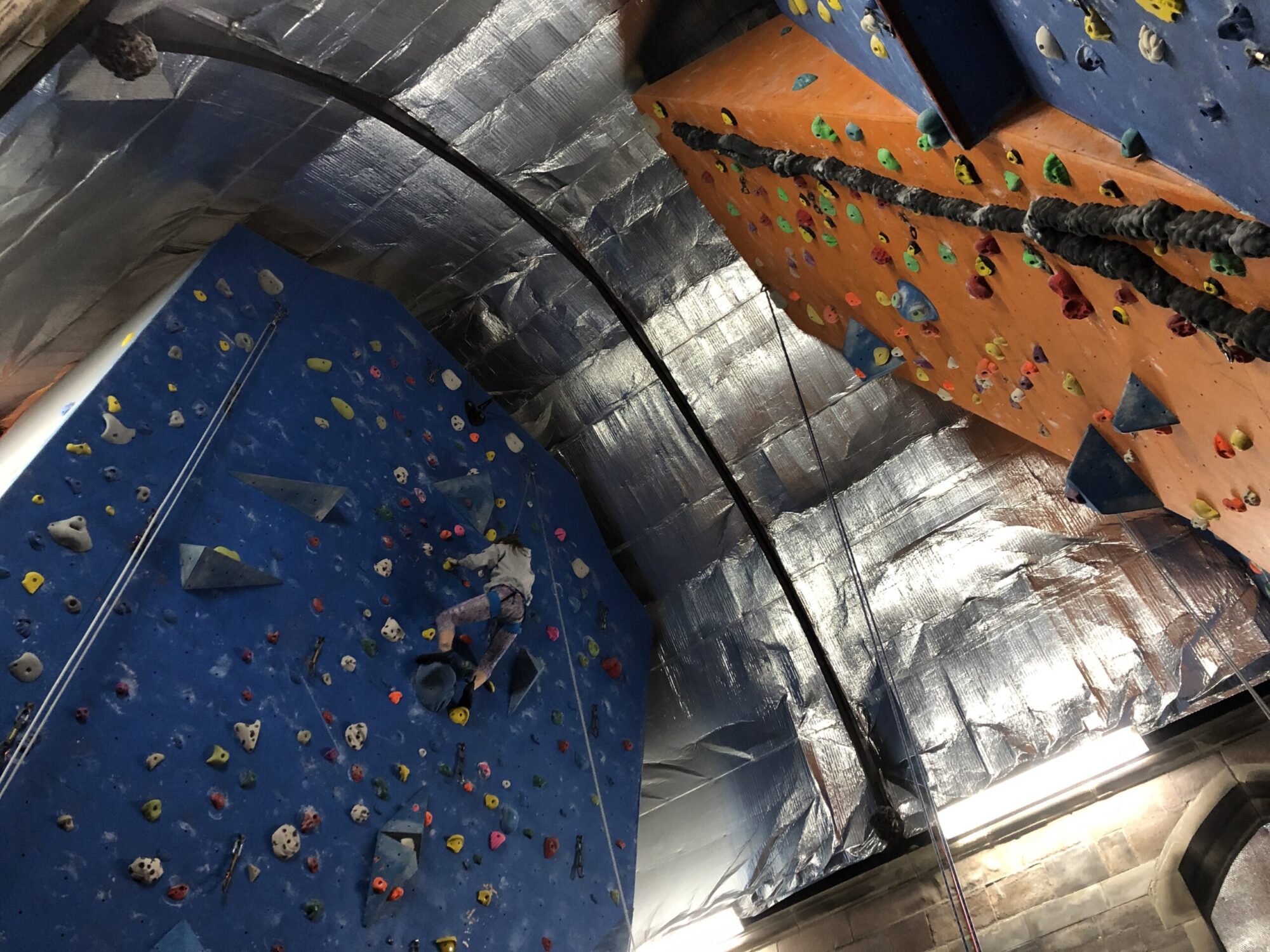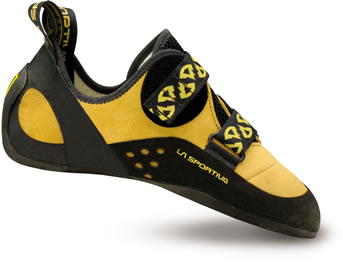Here’s our A to Z of Indoor Climbing Terms
Do you know your jugs from your crimps, your clip from your crux or your dyno from your static move? If you’re not sure read our glossary of commonly used climbing terms below, and you’ll soon be an expert in the jargon.
A
Arete – an edge where two walls meet sticking out.
B
Belay – device used to control the rope by the belayer.
Belayer – the person who looks after the climber ensuring they never fall to the ground.
Beta – specific information about the route, hand & foot placements
Bolt/sport climbing – plates fitted to allow a climber to clip their rope into
Bouldering – climbing to a low level usually above mats (see High Ball Bouldering)
Bridging – where your left foot and hand are on 1 wall of a corner and your right foot and hand are on the other wall of a corner.
C
Climbing – ascending something with a rope.
Clip – extender, the bit you clip the rope into on your way up.
Corner – where there is a change in the wall direction making an internal corner.
Crab – see Karabiner
Crimp – small hold.
Crux – Latin word meaning cross, is the hard bit of a route.
D
Disco knee – when your legs are shaking for no reason when you are trying to stand on holds (also known as Shaking Stevens)
Dyno – a dynamic move meaning that you are jumping for your next hold so you have no point of contact on the holds
E
Edges – in cut or some what positive footholds that lend themselves to accurate foot placements.
Extreme – an outdoor climbing grade starting at E1
Egyptian – or drop knee twisting action of foot and leg to pull the body into the wall by dropping your inside knee.
F
Flash – To send, or complete, a pitch on your first try with the help of some beta
Free Climbing – placing gear to prevent the climber hitting the ground
G
Guppy – a protruding hold that is squeezed between the palm and the fingers so that the hand forms a cup.
H
Heel/toe hook – using the heel or toe around a hold
High Ball Bouldering – like soloing but not so high, but higher than bouldering, usually above mats.
Holds – the coloured blobs that we hold onto and put our feet on.
I
Inside Edge – the area from your big toe down is the inside edge of your climbing shoe.
Italian Hitch – Knot used to belay or abseil. Also known as a Münter hitch. Recommended when you have dropped your Sticht plate down the crag. Not recommended for multiple abseils as it twists the rope.
J
Jamming – a technique used for climbing a crack where you jam your feet and hands in it
Jug – very large hold.
K
Karabiner – metal loop used for joining bits of climbing equipment, or crab for short.
Knee bar – is where a leg “hold” is created by camming your knee/lower thigh up under some blocky, cracky, or roofy feature in opposition to your foot.
L
Layback – a technique used for crack climbing by leaning away.
Lower off – the final clip at the top of the route which you put the rope into to be lowered off.
M
Mantel shelf – coming from the piece above the fire place. Having hands on the shelf then straighten the arms to then bring a foot up and match with the hands and then stand up.
Matching – using a hold with both hands or even a hand and foot
N
No hands rest – when you are balanced on your feet and you can release your hands.
O
Onsight – means to walk up to a route and send it first try, having never seen anyone on it or being told any beta. (Beta – route knowledge, Flash – having beta)
Overhang – climbing surface that leans towards you. (see stepped overhang)
P
Problem – bouldering line
Pumped – when your forearm muscles become solid through the effort of holding on
Q
Quickdraw – Two snap-gate karabiners linked by a short sling equals one quickdraw. Used to connect protection to the rope when leading a traditional route, or to clip bolts when sport climbing.
R
Redpoint – Leading a sport route after inspecting it, and maybe after practising individual moves, or simply any sport lead where moves have been done before (in the event of a fall).
Route – the line which the climb follows
S
Shaking Stevens – see Disco knee
Slab – climbing surfaces that leans away from you.
Sloper – smooth slopping hold
Smear – with hands or feet where the climber pushes against a surface where there is no hold or the hold is very slopey.
Soloing – climbing without ropes
Static move – where you go to your next hold in control while maintaining 3 points of contact.
Stepped overhang – like the underside of a staircase, it overhangs with the occasional step.
Stickies – climbing shoes, boots or EB’s
T
Thumb sprag – usually on an arete where the fingers are on one side and the thumb wrapped around a hold on the other
Traversing – high or low level moving left to right rather than up
U
Under cut – a hold that is good at the bottom and as you move up it is really positive
V
Vertical – climbing surface that is vertical.
Volume – an added section which is temporary and acts as an obstacle to be climbed around or over.
W
Wired – to have a route “wired” means to have its moves completely figured out, usually through practice or by watching someone else on it.
Whipper – taking a long fall
X
Y
Yo-Yo – to climb a route in a style where, if you fall off, you return to the ground, leaving all your protection in place and then start climbing again after a rest. The yo-yo refers to the repeated up and down movement of the climber who falls off more than once on a hard move. A common style of ascent in the 1970s and early 1980s, before the preferred style became redpointing.
Z
Zone – to be “in the zone” is to be in THE perfect mental state for climbing.
We couldn’t think of any climbing terms beginning with x. If you can, please email and we’ll include them in the list.
Thanks to Chris Bate and Charles Arthur for some of the terms, see this article.





